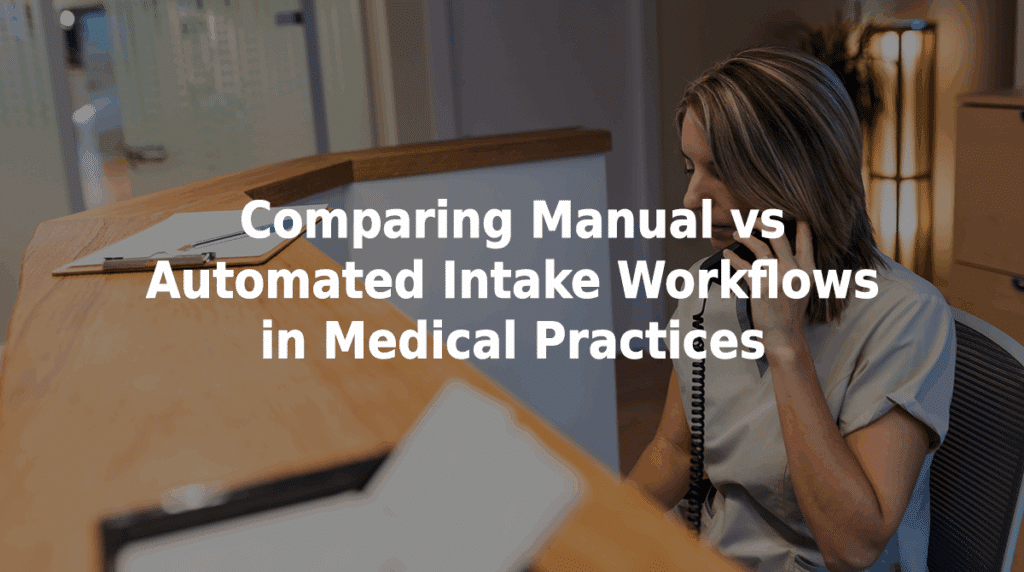Comparing Manual vs Automated Intake Workflows in Medical Practices
Why Intake Workflow Design Matters
For practice managers, intake workflows are the backbone of patient communication. The process you use — whether manual or automated — impacts staff workload, clinical accuracy, and patient satisfaction. Comparing manual vs automated intake workflows in medical practices reveals clear differences in speed, consistency, and quality of information collected.
Manual Intake: Strengths and Limitations
Manual intake often involves phone calls, handwritten notes, or EHR entries created by nonclinical staff during patient conversations.
Advantages:
- Allows for personal interaction with patients
- Flexibility in handling unusual or complex situations
Potential Considerations:
- Higher risk of incomplete or inaccurate details due to human error
- Increased call wait times and patient frustration
- Time-consuming for staff, reducing availability for higher-priority tasks
Automated Intake: Modernizing the Process
Automated intake tools, such as a secure chat-based system, can guide patients on how to self-report their symptoms through dynamic, clinically designed forms. This ensures that the most important details are captured before a clinical team reviews each message.
Advantages:
- Consistent, accurate data collection
- Faster processing without additional staff time
- Improved patient convenience and satisfaction
- HIPAA-compliant security measures
Potential Considerations:
- Requires initial implementation and staff onboarding
- Must ensure the technology integrates smoothly with existing systems
Side-by-Side Workflow Comparison
| Feature | Manual Intake | Automated Intake |
|---|---|---|
| Data Accuracy | Variable | Consistent |
| Staff Time Required | High | Low |
| Patient Convenience | Moderate | High |
| Error Risk | Higher | Lower |
| Scalability | Limited | High |
Best Practices for Transitioning to Automation
- Evaluate current bottlenecks in your manual intake process.
- Pilot automated workflows with a small patient group.
- Train staff thoroughly to manage both patient-facing and back-end components.
- Gather feedback from patients and staff to refine implementation.
Take the Next Step
Transitioning from manual to automated intake can save your team time while transforming patient communication and care.
See how MedMessage Automate can help your practice streamline intake workflows and improve patient satisfaction, or contact us directly to talk more about a program.

